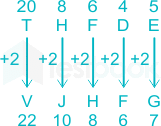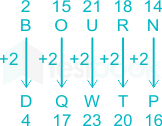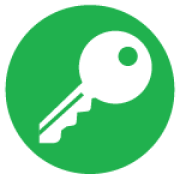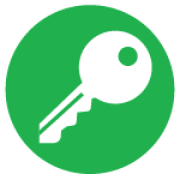UPPSC GS-2 (Testbook) Mock - 13 - Software Development MCQ
30 Questions MCQ Test - UPPSC GS-2 (Testbook) Mock - 13
Two numbers are in the ratio 12 : 7. If their HCF is 25, find the numbers.
Avi sold a house to Bhargav at a gain of 10% and Bhargav sold it to Chetan at a gain of 20%. If Chetan paid ₹2,64,00,000 for it, then at what price must Avi have purchased it?
Choose the correct alternative from given ones that will complete the series.
8, 13.5, 19, 24.5, 30, (?)
Study the diagram and identify the people who can speak only one language:

A puzzle enthusiast is trying to remember a code to unlock a mysterious box. He recalls the following details :
1. The code starts with 3.
2. The code ends with 729.
3. The second digit is twice the first digit.
4. The third digit is half of the second digit.
Now, considering these conditions, the enthusiast has narrowed down four potential codes for the mysterious box. Find the suitable one.
Given below are two statements: one is labeled as Assertion (A) and the other is labeled as Reason (R).
Assertion (A): Counselling is a face-to-face relationship between the guidance worker and the person who seeks a special kind of guidance.
Reason (R): Counselling is an intimate interpersonal relationship in which one person by virtue of his special training and skills is recognized as the helper while the other person is recognized as an individual or group with a problem who can benefit from the former.
In the light of the above statements, choose the most appropriate answer from the options given below:
Directions: A statement is given followed by two inferences I and II. You have to consider the statement to be true even if it seems to be at variance with commonly known facts. You have to decide which of the given inferences, if any, follow from the given statement.
Statement: Many students are addicted to mobile games and this leads to poor academic performance.
Inference:
I. Many Students are not paying attention to studies due to mobile games.
II. It is only because of mobile games that students fail in the examination.
DIRECTIONS: Each question has a main statement followed by four statements labelled A, B, C and D. Choose the ordered pair of statements, where the first statement implies the second, and the two
statements are logically consistent with the main statement.
He is either literate or illiterate
A. He is literate
B. He is not liter ate
C. He is illiterate
D. He is not illiterate
A quote is given in this question after which a statement has been given. Read the quotation carefully and determine the statement based on the given quotation.
Amazon has acknowledged a case of data breach (data secrecy rule violation) related to highlighting users names and email IDs, without giving details about the nature or scope of the incident. However, the company has not disclosed the total number of users affected by the violation. An email has been sent to all affected users, which notifies them only about technical error. Now, this e-commerce giant is presently offering gift cards as compensation to people affected by their data breech. Seattle headquarters e-commerce company has also offered gift cards between $ 5 to $ 100 for some of those users who have been affected by this violation. A publication citing an email correspondence between Amazon and the customer, Paul Gagnon said that when he called the customer service desk of the company and questioned the leaked data, the company would give him a promotional certificate worth $ 100. Offered. When Gaganone could not be told about the data being leaked, then he was offered $ 100 as an apology. Many people affected by Breach filed a complaint with the company but none of them got any response from the company till now. It is being told that Amazon customers and the supervisors have been instructed to comment on or not to offer any kind of compensation to affected Amazon users.
Statement: Mr. Paul is not only promoted with a $ 100 promotional certificate was found, but also the reason for the data rule violation was also reported.
Select one of the following options, the appropriate option:
A - Quote is definitely true.
B - The statement is probably true.
C - statement can not be determined .
D - statement is definitely false.
People with good interpersonal skills are required in an organisation because



 The logic follows here:
The logic follows here:



























